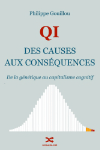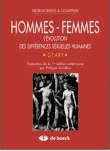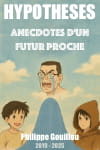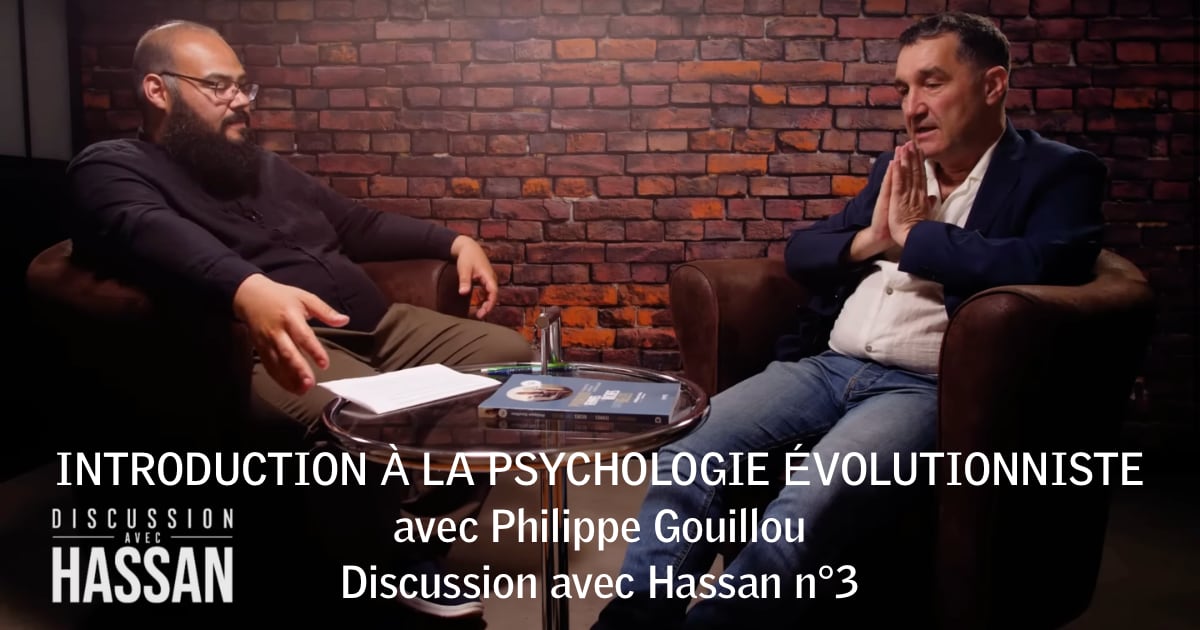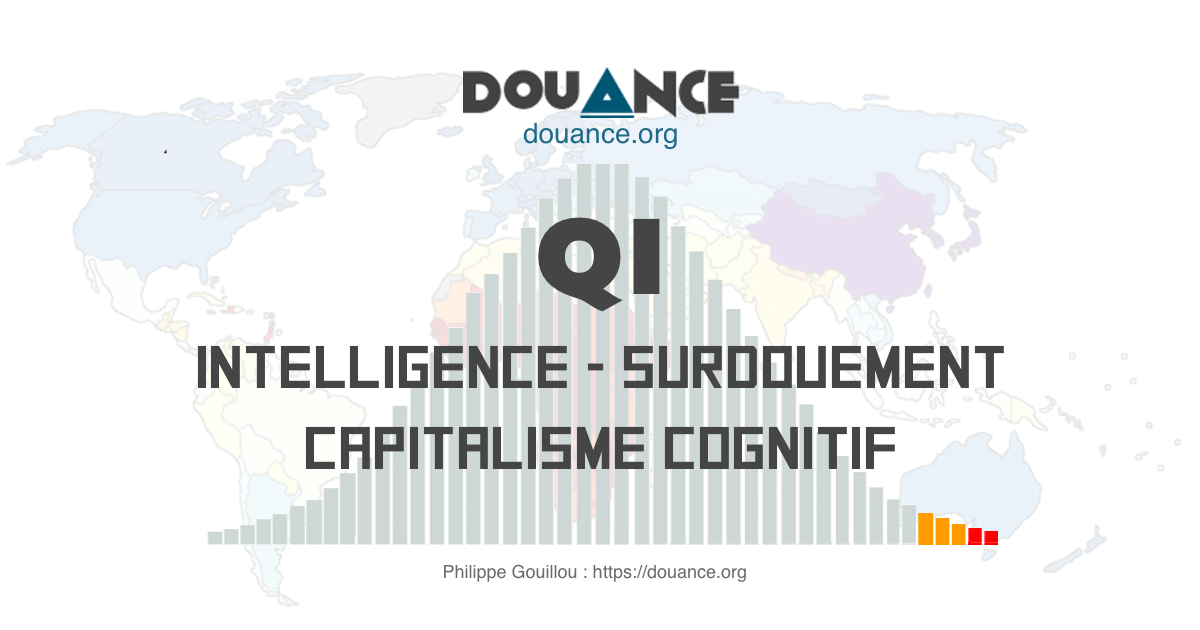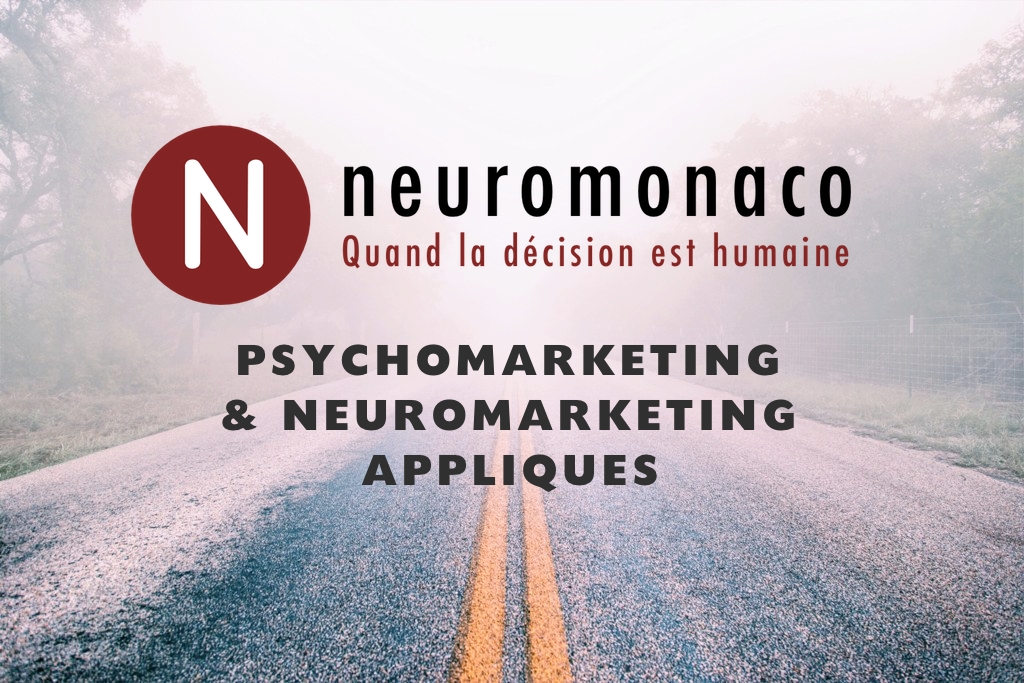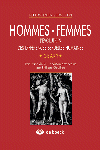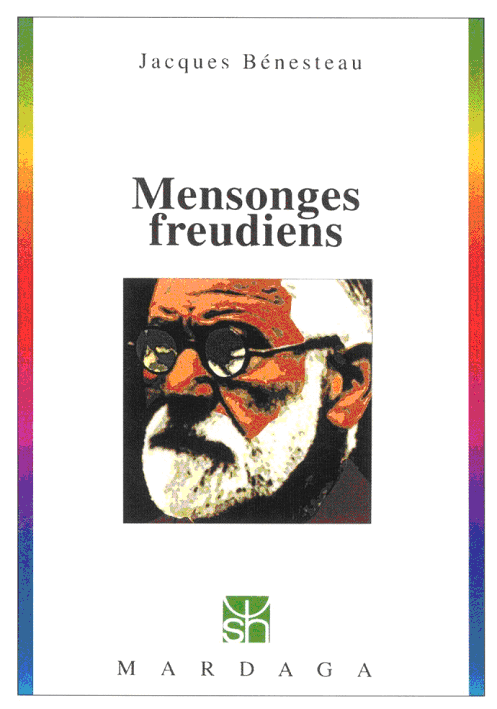 ]
]
Mensonges freudiens : Histoire d’une désinformation séculaire.Jacques Bénesteau. Brussels : Mardaga, 2002. 400 pp. ISBN : 2-87009-814-6.a review-article for publication to The Times Literary Supplement.December 10, 2002, by Robert Wilcocks.
In 1998, J. Allan Hobson, professor of psychiatry at Harvard University, wrote the following in his appreciation of the American science reporter Edward Dolnick’s examination of the abuses perpetrated on those suffering from autism, schizophrenia, and obsessive-compulsive disorder at the hands of psychoanalysts, Madness on the Couch : Blaming the Victim in the Heyday of Psychoanalysis : "Why did so many smart people fall for Freudian psychoanalysis ? And why did they use it in such egregiously foolish ways to the detriment of their field and their patients ? Dolnick’s book shows clearly and vividly how easy it was and makes us wonder what folly now parades as wisdom."
Hobson’s questions have puzzled many of us for a very long time. Dolnick’s book, as Hobson observes, shows how such a series of disasters happened ; it does not show why. Hobson himself (as he recounts in the preface to his own The Dreaming Brain, 1988) began his academic investigation of the brain with a heavy dose of Freudian dogma which he countered with "a good scientific towelling-down". Sir Peter Medawar was by no means the first (in 1972) to point out with authority that, irrespective of its, and its founder’s, claims to the contrary, psychoanalysis was not to be considered as scientifically founded : "…psychoanalysts are wont to say that Freud’s work carried conviction because it was so firmly grounded on basic biological principles. I am therefore sorry to have to express the professional opinion that many of the germinal ideas of psychoanalysis are profoundly unbiological" (Pluto’s Republic, pp. 70-71)
There are, in effect, two issues involved in the world-wide success of psychoanalysis as an enterprise for understanding (and reforming) lived experience – evidence and persuasion. The evidence was lacking, and was known to be lacking (by Freud himself from the time of the early papers on hysteria) ; there remains the powerful persuasion of a brilliant rhetoric – a quadruple rhetoric : of the "Just-So" presentation of the "facts" of the tiny number of case histories ; of the seductive presentation of the theories ; of the presentation of the Self (Freud’s scientific and intellectual integrity was always an important part of the persuasion of psychoanalysis) ; of the presentation of the "Cause" – psychoanalysis, the only way to find out the truth about yourself. Of all the countries of the Western world (with perhaps the exception of the heavily Lacanized Argentina) France has been for many years the most Freudian. Its intellectual and literary elites have for the most part accepted the tenets of Freudianism (or of its heterodox French version, Lacanism) as being probably correct and in many cases so self-evidently correct that critical discussion is discouraged, or, more often, is seen as a sign of naive "repression" on the part of the critic. To this day – Michel Houellebecq and the reformed J.-F. Revel may be honorable exceptions – the French literati, including Sokal targets like Julia Kristeva, take Freudian tenets as revealed truth. The massive documentary research of Scandinavian, Dutch, and what the French still call "Anglo-Saxon" sources (i.e. work published in English in North America and Great Britain) has been largely unavailable to the French scholar and has certainly not been widely disseminated in translation to the French browser of intellectual book-shelves.
A quarter of a century ago a book was published posthumously in France : Freud a menti ! (Cevic : Mandres-les-Roses, 1977). The author, the late French endocrinologist, Dr. Jean Gautier, had died aged 77 in 1968 and left behind a pile of unedited documents relating to his medical researches. One of them was Freud a menti !.I own a copy of this intriguing endocrinological work simply because it was a farewell present from a French neuro-psychiatrist friend. The book itself, published by a minor press, has faded from collective memory – if ever it had been a part of it ! Its medical confrontation with the tenets of Freud remain as valid as when they were written ; but this has not prevented the galloping success of the juggernaut of psychoanalysis. Dr. Gautier presented evidence but was not an expert in the rhetoric of persuasion.
Jacques Bénesteau, whose name will be unfamiliar to most British psychiatrists or clinical psychologists, has been quietly practising, and teaching, for the last quarter of a century in the Faculty of Medicine at the Université de Toulouse. Unlike Dr. Gautier, he has an acute ear for the use of the rhetoric of irony, and, with the exception of his comments on the current state of the teaching of psychology and psychiatry in French faculties of medicine towards the end of his book (in particular, chapters 13 and 14, where the empty adulation of Jacques Lacan is derided), a most restrained use of the rhetoric of indignation. His recent book, Mensonges freudiens : Histoire d’une désinformation séculaire, will no doubt change his status of anonymous professional. That it has come from a French clinical child psychologist, is a sign, I hope, that times are changing. For the first time – and not for the first time in a long time, but for the first time – an experienced French clinical psychologist can be heard criticizing, with a carefully assembled critical apparatus gathered from throughout the world, the very basis of Freud’s propaganda. It is not so much a bombshell (though in certain quarters it will be regarded in that way -and not without reason) ; nor is it simply what reviewers like to call "a breath of fresh air" (though indeed it is) ; it is, more accurately, the consequence of the long and detailed documentary research that Bénesteau has undertaken over the years to produce what is now -and for some considerable time will remain- the most significant piece of scholarship ever written about the "clinical" adventures of Sigmund Freud and of his followers to the present day. Even the great Henri Ellenberger, of The Discovery of the Unconscious (1970), has been outpaced. That this extraordinary achievement has emerged from France is perhaps a very rare example of poetic justice.
The phrase that most struck me, after reading this exhaustively researched (and yet highly readable) volume for the third or fourth time, was the one in Chapter 15 ("La déréliction du freudien dans son monde virtuel") dealing with Bruno Bettelheim’s supposed improvement of the autistic children in his care which includes reference to the earlier 1929 case of "Dick" and Melanie Klein’s concept of the "bad mother". The opening two sentences of Bénesteau’s next paragraph deserve to be quoted for the heartfelt and empathetically-guided intellectual response of a child psychologist who has not forgotten – and who has chosen not to forget – his early lessons in medical training : " Il y avait quand même là, outre l’imposture et la misogynie, un manque cruel d’empathie et de compréhension à l’égard de ces familles, car il est tout à fait extraordinaire qu’à aucun moment, on n’envisagea que les parents puissent être affectivementperturbés parles souffrances de leur enfant malade, ou par la culpabilité dont on les accablera pendant des années. Richard Hunter, psychiatre et historien de la psychiatrie, avait noté en 1972 qu’il n’y a pas d’autre spécialité que la psychanalyse qui ait autant blâmé les patients pour leurs maladies, et pour sa propre incompétence thérapeutique. " (Bénesteau, 335)
For all its careful intelligent scholarship, this, one feels, is a book written from the heart, the wise heart of a practitioner who has seen too often in his own practice the mindless disasters created by those who, as Sir Peter Medawar reminded us in 1975, "will continue to perpetrate the most ghastly blunders just so long as they persevere in their impudent and intellectually disabling belief that they enjoy a `privileged access to the truth’." (Pluto’s Republic, pp. 139-140) This trenchant quotation from the Nobel Prize for Medicine is, naturally, one of the many observations from British and American scholars which pepper this unusually oecumenical text. It is a rare treat to find a French medical historian who pays such comprehensive attention to the writings of the "Anglo-Saxon" world. Bénesteau includes in his wide-ranging trawl the dense, unforgiving Scandinavian contributions to Freudian scholarship of Max Scharnberg (who wrote in The Myth of the Paradigm-Shift, or How to Lie with Methodology (1984) "The only thing that is academic in Fisher & Greenberg’s book is the jargon. Everything else is swindle") and the lucid, and no less unforgiving, revelation of realities uncovered by the Dutch researcher Han Israels. The French Freudian critic Mikkel Borch-Jacobsen (now teaching at the University of Washington in Seattle) once remarked that French historiography of Freud and his followers will one day [his emphasis] have to take account of the last thirty years of Anglo-Saxon scholarship. With Bénesteau’s book this is now a fait, at long last, and amply, accompli. When the English biographer Ronald W. Clark produced his pioneering volume Freud : The Man and the Cause in 1980 he blazed a trail that others, even those critical of Freud, have followed. Implicit in Clark’s title was the distinction between Sigmund Freud and Psychoanalysis, the "Cause" he founded. Bénesteau’s originality is to ignore this distinction – to argue, in effect, that the "Cause" and the emerging, and often mutually contradictory, thoughts of its founder were one and the same. Psychoanalysis is Freud. Clark accepted the rhetorically-laden suggestion that a new "science" had been created and that Sigmund Freud was the discoverer, or inventor, of it. Clark also accepted the idea, put about by Freud himself, of course, that the inventor of this new method of understanding was not coterminous with it.
Bénesteau’s title, Mensonges freudiens, and its accompanying subtitle, Histoire d’une désinformation séculaire, offers the reader from the very beginning what will be the thesis of the book : Freud lied – he lied to his patients, he lied to his colleagues, he lied to his collaborators, he lied to the medical profession when he formally addressed it, he lied to the world at large when it would listen, and, probably (but who will ever really know ?), he lied to himself. "Freud lied ?" Yes, the self-proclaimed proponent of the truth, however unpalatable, lied, and the lies have had a century of dissemination. Bénesteau has, in effect, researched and written out in full the thesis behind Frank Cioffi’s rhetorical question in his 1974 article in The Listener : "Was Freud a Liar ?" Although Bénesteau goes through the famous (and inadvertently hilarious) correspondence with the Berlin E.N.T. surgeon Wilhelm Fliess, the six famous "cases", and the subsequent versions of Freudianism to proliferate in the United States and France, he begins with what is available – or rather, what is not available – in America. He begins with the Freud Archives.
He begins with the Freudians’ decision to withhold so much of this material from public, or merely scholarly, review, and he provides, on his opening page, this definition of "désinformation". It is worth quoting because it shows Bénesteau’s stance and what he has been up against : " La désinformation est la manipulation délibérée de l’information pour contrefaire la vérité, qu’il faut ignorer. Elle est l’instrument d’une falsification intentionnelle de la perception et de la représentation qu’autrui se fait de la réalité, dans un dessein qui profite soit à un individu, soit à une collectivité. C’est une manipulation des consciences et des images mentales. " (Bénesteau, p. 9) And "disinformation" was practised by the "young" Freud in his forties writing to his supposed closest of friends, Wilhelm Fliess, and continued by him throughout his long career, whether in the relative privacy of the Vienna Psychoanalytical Association (his own Wednesday evenings with faithful adherents to the new doctrine), or in his published inventions about the lives of the famous dead -for example, Leonardo da Vinci.Reams have been written about Freud’s "mistake" in taking the Italian nibbio for "vulture" instead of the very much smaller "kite". Bénesteau clearly demonstrates that the "mistake" was not a mistake at all ; it was, rather, a quite deliberate falsification – a mid-career example of the désinformation that was to follow (and that had already begun its life with the quite impossible associations cunningly embroidered into the Specimen Dream of Irma’s Injection in the second chapter of The Interpretation of Dreams).
Bénesteau’s book is arranged in 16 chapters divided into three parts. Part One, "La Désinformation", introduces us to the deceits of the present censure (some material will not be available for public or scholarly scrutiny until the twenty-second century -by which time Freud will merely be a half-forgotten "cultural memory" of the twentieth century, as the once trendy Mesmer was for the late 18th Century) imposed on the Freud Archives. Bénesteau then takes us through the sorry tale of the original (and highly censored) 1954 publication of the Freud-Fliess correspondence (when Anna Freud and Ernst Kris and Marie Bonaparte, as principal editors, tried to "air-brush" into non-existence the realities from the known disasters) ; the rupture with Jung ; and the wretched case of Freud’s treatment of Dr. Horace Frink -and the half-dozen lives that he thereby, and cynically, wrecked.This passage, known to scholars of psychoanalysis, is mandatory reading for those who still credit the myth of the Wise Freud of maturity. The Freud of "maturity" was neither wiser (his 1924 edition of Studies on Hysteria -when Freud was 68- leaves the case of Emmy von N. unsolved, and his ignorance of her real sexual life unexplained), nor more medically informed (the long footnote to this case about a young woman probably suffering from multiple sclerosis is still left, uncorrected, for us to imagine some infantile paternal sexual abuse, as if this could in any conceivable way be responsible for the mature young woman’s physical impairment) than the inventor of the late Nineteenth Century. But he was just as vicious and as petty, and as medically unaware, as his earlier self -only now he had learned to play the violin of the Public Performer, and he was an Oistrakh.
Part Two, "Menteries et Déraison", examines in depth the Freud-Fliess correspondence. Bénesteau notes Freud’s increasing diagnostic reliance on Fliess’s wonderful notion of the "nasal reflex neurosis", something Frederick Crews had already noticed in Unauthorized Freud : Doubters Confront a Legend(1998) and the, almost inevitable, discovery of a convenient human guinea-pig in Emma Eckstein. This section continues with Freud’s cocaine adventures and ends with a detailed examination of the Freudian "reality" behind the composition of the memory of Leonardo da Vinci’s childhood.
Part Three, "La Bifurcation", leads us through the six case histories to the "magic" practice of psychoanalysis (an unreal mixture of a kind of hypnosis – which Freud claimed to have abandoned before the turn of the century -, of suggestion – the dangers of which Freud was aware, and the employment of which Freud always denied, and outright power-politics – Freud was strangely coy about this – exerted upon vulnerable people at a vulnerable time in their lives), to the present-day proliferation of Lacanian-inspired versions of Freud.
In a sense, and a deeply ironical sense, Jacques Lacan is seen as being the ultimate and, perhaps, the most faithful continuer of the legacy of whimsy and mercenary deception that has made Freud a household name (both Lacan and Freud were multimillionaires at the end of their lives). Claire Brétecher once had a cartoon for Le Nouvel Observateur in which a couple of Parisian intellectuals were to be seen kneeling in prayer by their bedside beneath a portrait of Sigmund Freud, their guru. Bénesteau has given us a densely documented, and perhaps the ultimate account of why this cartoon is at once so funny and so tragic.



